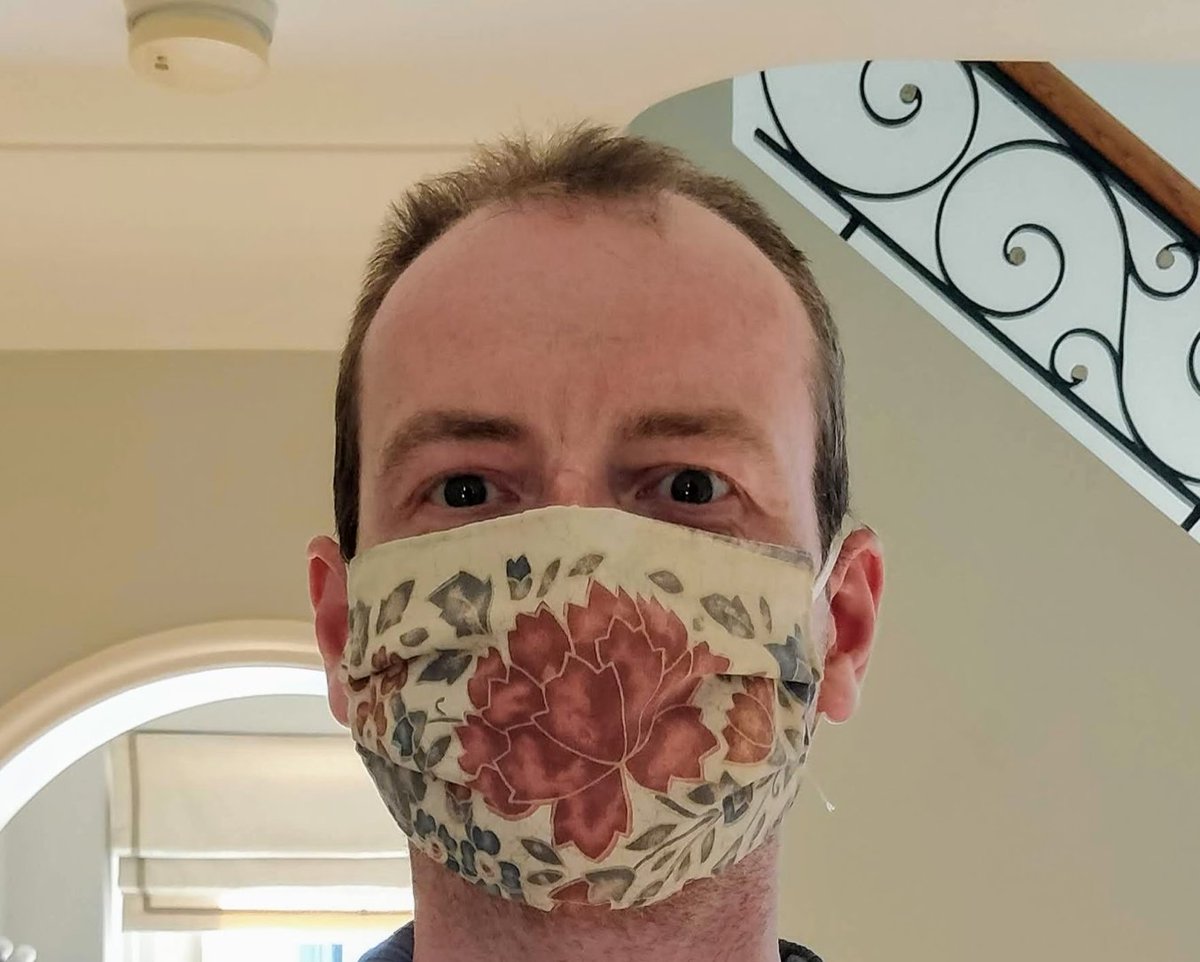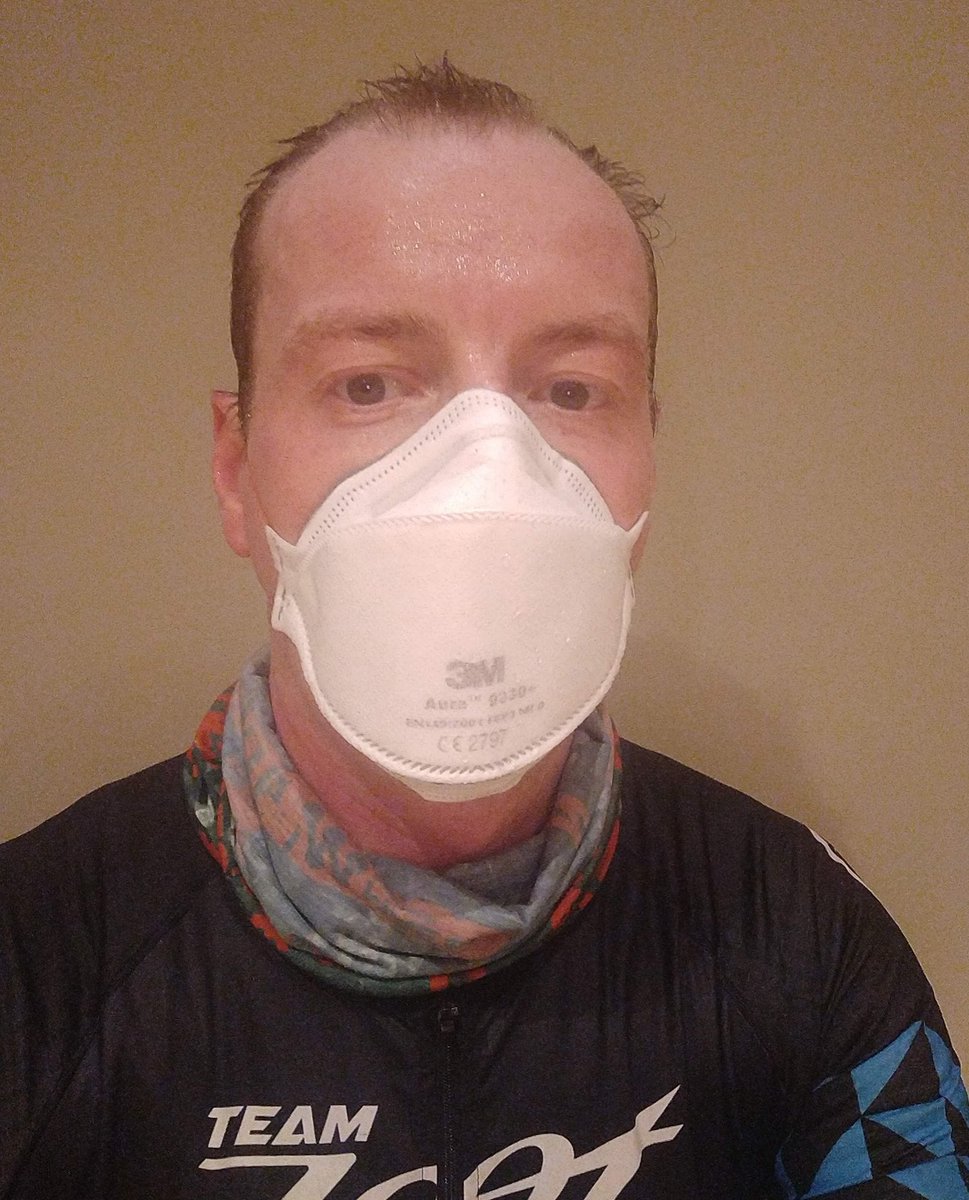
A quick thread on running in masks
I should start by saying I'm not advocating for masks outside; but like all good scientists I reserve the right to change my opinion.
However there are rumours UK rules may change, and I've done this before...
1/
yorkshireeveningpost.co.uk/health/coronav…
I should start by saying I'm not advocating for masks outside; but like all good scientists I reserve the right to change my opinion.
However there are rumours UK rules may change, and I've done this before...
1/
yorkshireeveningpost.co.uk/health/coronav…
So after being tagged in some discussions I ran home today testing three different masks to remind myself of my original run (which was in a "nan's curtains" 3-layer cloth mask)
But first a few tips on masked running:
2/
But first a few tips on masked running:
2/
It feels weird at first. It restricts flow to a degree and can reduce top speed.
However, it does not drop your oxygen levels!
It helps to breathe in more slowly (ie change breathing pattern to in slow, out quick) so you can still take deep breaths.
Start slow and build up.
3/
However, it does not drop your oxygen levels!
It helps to breathe in more slowly (ie change breathing pattern to in slow, out quick) so you can still take deep breaths.
Start slow and build up.
3/
Today's run was just over 8 hilly miles home, with about 30 minutes in a surgical mask, 15 using a neck-gaiter, and 15 in a proper FFP3.
It was cold, and it was raining (the rain is important).
4/
It was cold, and it was raining (the rain is important).
4/
Cloth mask
Not used today, but for comparison - not bad when dry, bloody irritating when sweaty and wet - turns into a wet slap with each breath. However, definitely fine for 14+ miles on a sunny day last July!
5/
Not used today, but for comparison - not bad when dry, bloody irritating when sweaty and wet - turns into a wet slap with each breath. However, definitely fine for 14+ miles on a sunny day last July!
5/

Surgical mask
Similar to cloth . Very odd at first but focussing on slow breath in, fast breath out worked well and ran normally until rain/breath/sweat increased resistance. Would suggest a spare dry one for more than half an hour!
6/
Similar to cloth . Very odd at first but focussing on slow breath in, fast breath out worked well and ran normally until rain/breath/sweat increased resistance. Would suggest a spare dry one for more than half an hour!
6/

Gaiter
Some suggested these might not help reduce particles, but later research suggested it might be particles from the gaiter rather than breath droplets! Likely better than nothing. Breathing normal when dry, slight resistance when wet. Many use these in winter anyway!
7/
Some suggested these might not help reduce particles, but later research suggested it might be particles from the gaiter rather than breath droplets! Likely better than nothing. Breathing normal when dry, slight resistance when wet. Many use these in winter anyway!
7/

FFP3
I bought this for doing weights at the gym but it wasn't bad for running! Most resistance, and the only one with resistance on breathing out (well fitted!). However, structure meant it stayed off my mouth which was far more comfortable. Note no vent!
8/
I bought this for doing weights at the gym but it wasn't bad for running! Most resistance, and the only one with resistance on breathing out (well fitted!). However, structure meant it stayed off my mouth which was far more comfortable. Note no vent!
8/

So a quick comparison. Whilst I normally run without a mask at present, I am aware runners produce large plumes of exhaled droplets. Outdoor ventilation may rapidly dilute small ones, but it's important to keep your distance from other people to help prevent spread!
n/
n/
And because Dr Çevik puts it better than I ever will - a thread on outdoor risk and what we should be doing to reduce spread (tl;dr - support people to isolate)
https://twitter.com/mugecevik/status/1348771251758784517?s=20
• • •
Missing some Tweet in this thread? You can try to
force a refresh


